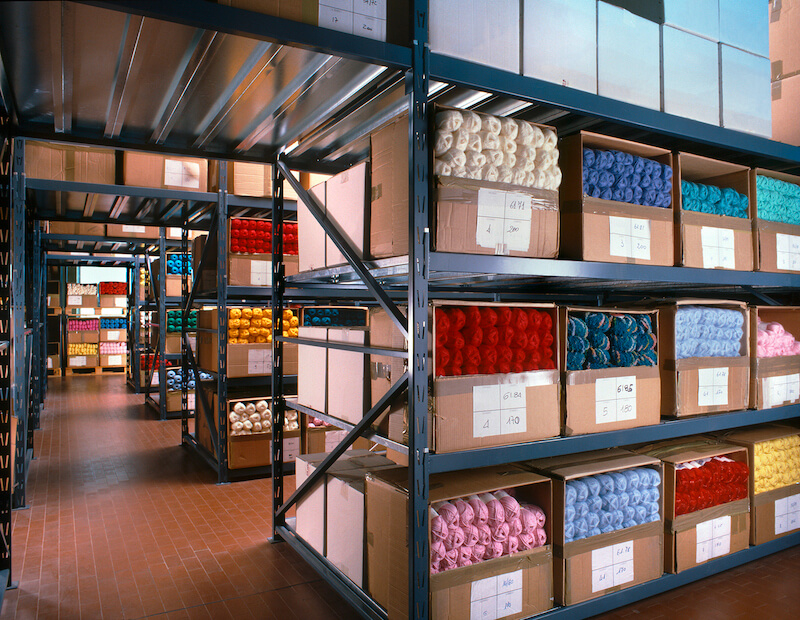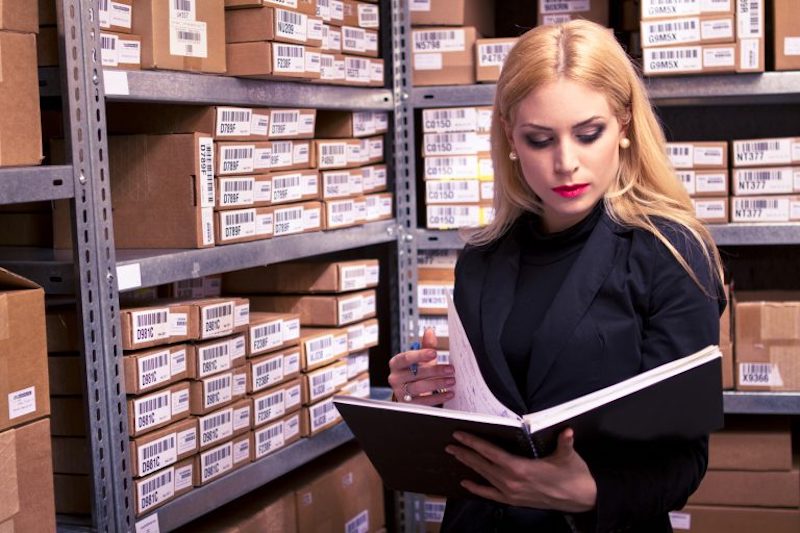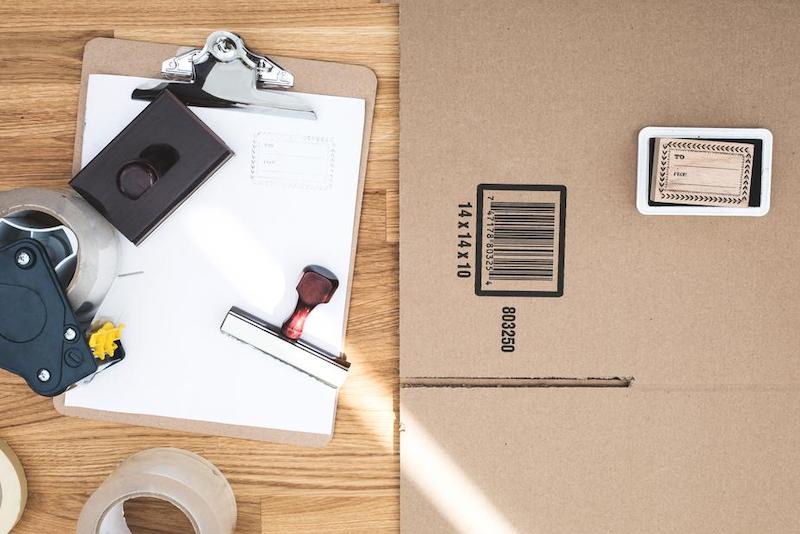
It may not be the sexiest part of your store, and it doesn’t get a lot of customer eyeballs, but your stockroom is still a critical part of your physical location.
In many ways, your stockroom acts as the headquarters of the store’s operations. It’s where your management office will be located, where you’ll receive shipments, where your staff will first discover the exciting new inventory, and where your extra stock will live.
Manage it right, and the stockroom will help you run a tight ship. But if you mismanage it? Your stockroom can leak its chaos out onto the floor of your store.
Here’s the good news: there are quite a number stockroom organization tips you can implement to set up your stockroom for success and keep it running at its peak.
Here’s how:
- Maximize your vertical space
- Place the most popular items near the front
- Keep heavy merchandise on or near the floor, but keep light merchandise completely off the floor
- Utilize inventory management software
- Invest in the right storage units
- Set up a system (and label it)
- Climate control the stockroom
- Provide excellent lighting
- Keep customers out of the stockroom
- Keep all necessary tools in the back (and label them!)
- Create an open shipping and receiving area
Download this free inventory spreadsheet to help you better manage your stock, purchases and sales.Want to streamline stock control in your retail business?
1. Maximize your vertical space
Don’t limit yourself to your floor space. Stockrooms typically have fairly high ceilings, so build up. The more items you can get onto higher shelves or racks, the more floor space you can free up for working staff to move in, which is always a plus. Invest in a few safe stools and ladders to make navigating the higher shelving easy.
2. Place the most popular items near the front
Help your floor staff function at peak efficiency by placing your most popular items near the front of your stockroom so they can quickly grab them and get back to the floor. While your employees will likely come to learn the stockroom by heart, delving into the back still eats up time and potential sales.
Nate Masterson from Maple Holistics suggests that you implement a policy of “forward space”. That is, keep a full box of your most popular products in easy reach, rather than just one or two. In practice, he says, “This can also mean taking two shelving slots instead of one if it’s selling twice as much as another item. Besides making it easier to run a shop, forward space can also help you simply track your sales trends.”
3. Keep heavy merchandise on or near the floor, but keep light merchandise completely off the floor
This is a safety tip: store your heaviest merchandise as close to the floor as you can. This will prevent potential collapses, but it will also lower the potential for injuries as your staff move the items around.
Conversely, lighter merchandise should be stored off the floor, so as to prevent cluttering and tripping. Cathy Donovan Wagner of Retail Mavens stressed that you should particularly keep clothing off the floor. Once she “found a dead mouse in a ‘return to vendor’ pile!”
4. Utilize inventory management software
Inventory management software is the perfect tool to help you keep your stockroom running at peak efficiency. For instance, a good stock control solution will help you accurately predict how much merchandise you’ll need shipped in and when, which will help guarantee your stockroom never becomes overstuffed and your floor never becomes understocked.
Inventory management software will also make it easy to run regular inventory counts. Kyle Baptist, the owner of Marconi’s Beach Outfitters, says that regular stock counts with a great inventory system (they use Lightspeed) “save time at the end of the season because you do not have to do an entire count.”
5. Invest in the right storage units
There are many different types of storage units available to someone outfitting a stockroom. Shelving, racks, drawers, bins, cabinets, etc. The exact type(s) that will work for you will depend on your stock, of course, but it’s recommended that you invest in mobile storage units right from the beginning.
Mobile storage units allow you to maximize the space in your stockroom between the walls with storage that can move around.
6. Set up a system (and label it)

One key to a functioning stockroom is creating an organized system for where you place items. Whether you choose to separate your products by department, color, size, style, etc. is up to you, but pick a way and stick to it.
A women’s clothing store, for instance, could choose to divide the stockroom by petite and misses sizing. Those sections can then be categorized further by knits and denim (which need to be folded) and dresses, blouses, and trousers (which need to be hung).
Once you’ve picked your system, stick to it and label it, especially if you have a large stock room.
7. Climate control the stockroom
Climate controlling your stockroom is essential because it helps keep all of your products in pristine condition. But it’s also really important because you’re going to have employees working long hours back there.
A broken A/C system can make employees miserable during the summer months, which in turn, can prevent them from showing up as their best selves on the sales floor.
8. Provide excellent lighting

It’s easy to forget the lighting aspect of your stockroom. After all, customers aren’t going back there. But a well-lit stockroom is important for a number of reasons.
- Your staff needs good light to work by. Good lighting creates a safer environment for them, and it will also help keep them awake. Remember, inventory work can be cumbersome and you don’t need a melatonin boost from low-lighting to help you fall asleep in the stockroom.
- Good lighting makes it harder to lose items in the back. With poor lighting, it’s easy for items to slip into cracks and crevices never to be heard from again.
9. Keep customers out of the stockroom
You’d think that customers don’t want to go in the stockroom, right? However, you’d be surprised at the number of shoppers who would wander into the area—something that must be avoided as much as possible.
Stockrooms can be somewhat dangerous and can open you up to all sorts of negligence lawsuits if a customer gets hurt back there. It also opens you up to the possibility of loss of your stock or your employees’ items. Best to keep them out. Plus, no one really wants to see how the sausage gets made.
10. Keep all necessary tools in the back (and label them!)

A lot of stuff is going to happen in the back. Unboxing, boxing up, folding, printing, retagging, etc.
You need to make sure all the necessary tools are in the back from box cutters and tagging guns to staplers and hole punchers. Wagner also suggests “clearly [tagging] all office supplies that are used in the back room so that it is obvious that they are to be returned there if found elsewhere in the store.”
11. Create an open shipping and receiving area
Your store needs somewhere to receive and unbox all your shipments and there’s no better place than the stockroom. Set up a desk by the door at a comfortable folding height, and reserve a fairly large, clear area where boxes can be placed and stock easily removed.
The tighter your shipping and receiving space is, the harder it will be for your stock employees to do their jobs, so give them as much space as you possibly can. One method for maximizing this space is to utilize mobile collapsible bakers racks that can be set up when you really need the extra storage space and taken down at all other times.
Wrapping up
By starting with an organized foundation and implementing a few key policies, you can make sure that your stockroom functions with smooth efficiency, rather than becoming a chaotic black hole you try not to think about.
Using a robust retail and inventory management software (like Lightspeed) can also keep the products in your stockroom in check.
Want to see how our solution can help you manage your stock with ease? Watch a demo of Lightspeed today!

News you care about. Tips you can use.
Everything your business needs to grow, delivered straight to your inbox.



